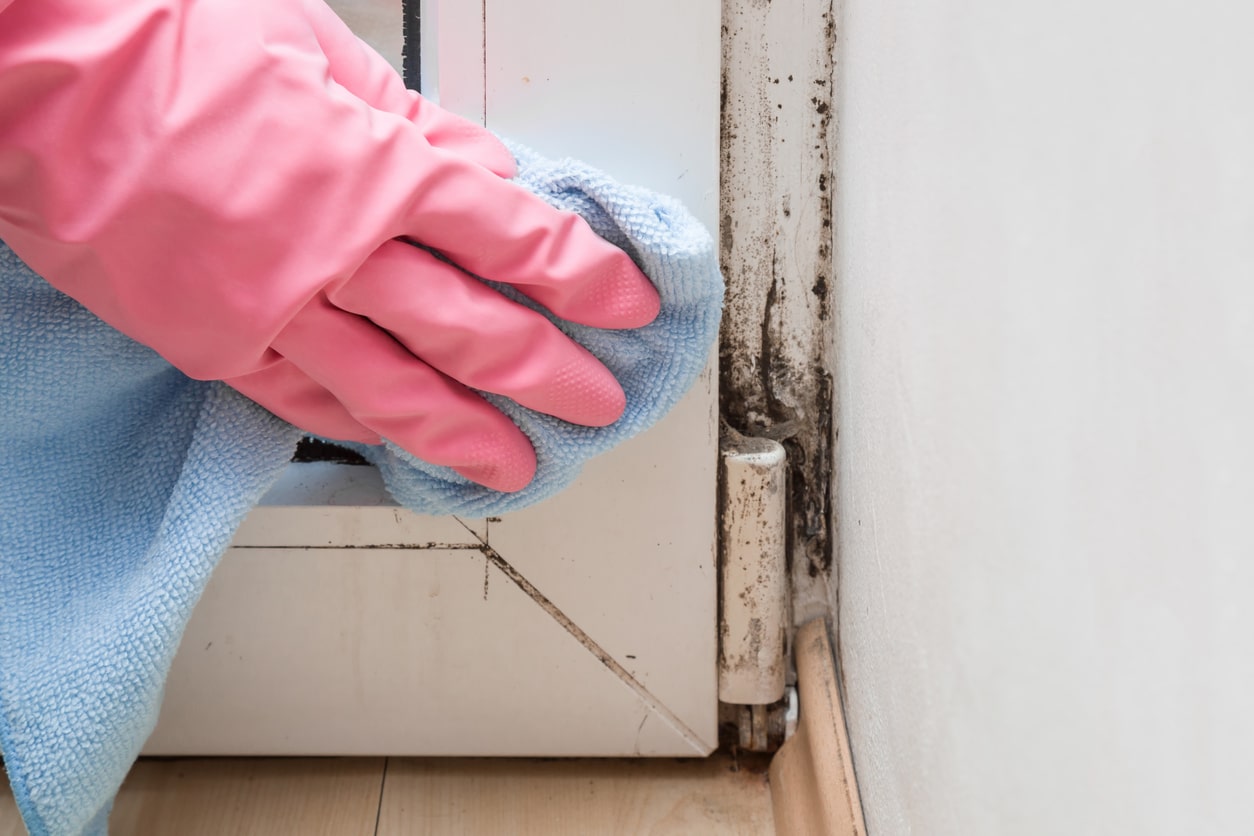More than 50 million people in the U.S. experience an allergic reaction every year. Allergic reactions occur when your body encounters a substance (allergen) it deems harmful and releases histamine. The release of histamine causes the symptoms most often associated with allergies, including but not limited to:
- Trouble breathing
- Itching
- Sneezing
- Runny or congested nose
- Hives
- Red or watery eyes
- Headache
Mold is an extremely common cause of allergic reactions, with allergies exhibited in one in five people. When released, mold spores can travel through the air and trigger allergic reactions. The most common types of molds that cause allergies include:
- Alternaria
- Aspergillus
- Cladosporium
- Penicillium
- Mildew
The best way to minimize your allergy symptoms is to reduce exposure to mold spores. Let’s take a look at some ways you can minimize mold exposure for a better, more allergy-free fall.
Limit Exposure Outside the Home

There are many sources of mold accumulation outdoors, but a couple of ways you can reduce your exposure to spores include:
- Rake the leaves. Mold can grow in piles of wet leaves and other plant materials. Regularly rake your backyard and resist the urge to jump into the colorful fall leaves at Greer City Park. If your mold allergies are severe, consider hiring a gardener to care for your yard during high-allergen seasons.
- Watch mold counts. Most cities track pollen and mold counts to help those with allergies. Minimize your time outdoors when the mold count is high to reduce your risk of a reaction.
- Clear your gutters. Mold can grow in the leaves of your gutters and prevent proper water drainage. Clean your gutters and ensure they are draining away from your house to prevent stagnant water from fostering mold.
Limit Exposure Inside the Home
Mold may be hiding in quite a few sneaky places around your home. Preventative measures may include:
- Cleaning. Keeping a clean home is one of the best ways to protect against mold growth. Regularly clean high-mold areas such as the basement, bathroom and kitchen, and watch out for moisture accumulation.
- Throw out moldy objects. It is nearly impossible to entirely rid soft surfaces, such as carpets and furniture, of mold. If mold does begin to grow, your best option is to remove or replace the objects.
- Run the fans. Running the fan in the bathroom during and after a shower or bath will help reduce the likelihood of mold growth.
- Use a dehumidifier. South Carolina is an extremely humid environment. Extra moisture in the air can lead to an increased likelihood of mold growth. Run a dehumidifier to keep the indoor humidity between 30% and 45% to prevent mold growth.
For more tips on managing your mold allergies this fall, contact Spartanburg | Greer ENT & Allergy today.
